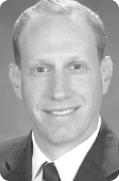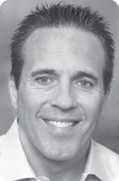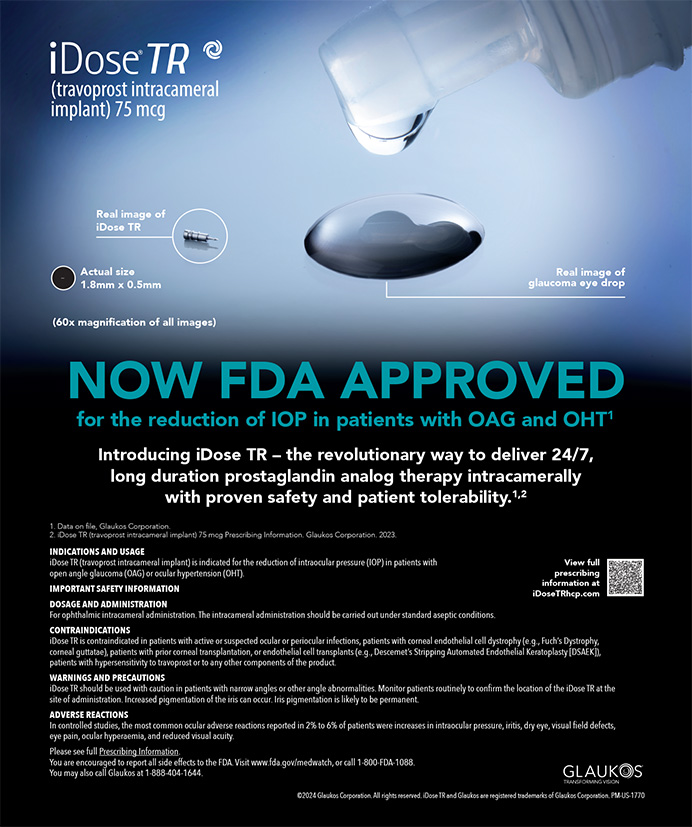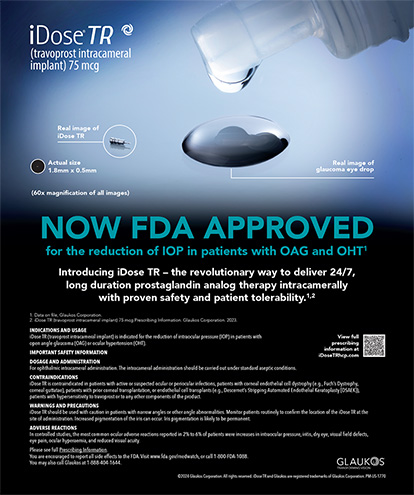

Many forces drive a wedge between doctors and industry: Pharma Guidelines, the Sunshine Act, and conflict of interest. Without physicians' participation, the process of advancing technology to regulatory approval can be inefficient, however, with clinically impractical or irrelevant concepts adding unnecessary cost and time. Industry has the resources for research and development, engineering prototypes, and regulatory processes, but the physicians produce the ideas by bringing news from the clinical frontline that informs the next generation of weaponry in the fight for better vision. Collaboration between physicians and industry is unquestionably beneficial and inarguably necessary.
Although the nature of the doctor-industry relationship has changed drastically over the years, the mutual commitment to patient-centric advances drives relevant and necessary innovation in ophthalmology today. CRST interviewed Chief Medical Editor Robert J. Weinstock, MD, and Nicholas T. Curtis, CEO of Lensar, to learn about the collaborative relationship between surgeons and manufacturers. The two recently worked together to advance the laser cataract procedure.
CRST: What is the inherent benefit of a collaborative effort between physicians and industry?
RW: There is tremendous value in collaboration, especially for patients and the advance of medicine. There is also a value to the company's financial success as well as physicians' professional development. The relationships between industry and physicians, however, continues to evolve, and there is much less compensation than in the past. The days of large consulting compensation packages are gone. With all the regulation, oversight, and modest compensation for being a consultant, there is almost a disincentive to be involved in innovation. Those who work closely with industry do so mostly for their own innovative drive and enjoyment of the process. It is a shame that the environment has changed and is not as conducive as it once was to physicians' involvement in corporate direction.
NC: These relationships are not glamorous. The physicians we work with give up a lot of their time, because they are genuinely committed to the success of the technology and want to be a part of it. Honestly, if our doctors were focused on making money, they would be better served [by] putting their time and energy into their practices and clinics, where the compensation is commensurate with their investment.
From my perspective, relationships with physicians are critically important, even vital. The reality is that corporate think tanks often operate in the abstract and, consequently, often miss the clinical mark. We must not lose sight of the importance of patients in the quest for advancing technology. Working with physicians toward a common good establishes the trust that is needed to ensure that industry is on target both clinically and practically.
CRST: For Lensar, Streamline (see Dr. Mark Packer's article from the July issue on Streamline http://crstoday.com/2015/07/intelligent-integration-for-optimal-outcomes) is the latest result of collaboration. What was that process like for both of you?
NC: It came about in stages, working with a group of young, driven surgeons with an appetite for new technology. Once the laser platform was in their hands, they began the work of validating the technology and identifying areas for improvement. This provided a significant opportunity to get feedback from the clinical frontline.
Immediately after launching the Lensar laser system, we began to question what's next. One of the benefits of being an independent manufacturer is the ability to quickly innovate; the downside is you have to pick and choose. Our resources are good, but they are not endless; we cannot afford to miss the mark. We want to remain very focused on addressing an unmet need that would ultimately work to validate our technology by delivering better outcomes with improved safety and efficiency. My team looked at the market size and broadened our feedback pool to a larger group of surgeons, not just the early adopters. Our data pointed at astigmatism—both preoperative and surgically induced—as a place to start. We then moved to the cataract to see how our imaging could further benefit the surgeon.
At a Glance
• Physicians who work closely with industry do so mostly
for their own innovative drive and enjoyment of the
process.
• Working with physicians toward a common good
establishes the trust that is needed to ensure that
industry is on target both clinically and practically.
• Larger companies have to weigh the impact on their
current portfolio of products and, therefore, are more
prone to make iterative changes, whereas small companies
look to be more disruptive by taking on larger
leaps in innovation.
RW: I have used other laser platforms, and that experience gave me a unique perspective on the Lensar system. I believe all of the laser platforms have room for improvement. The key to improving outcomes is improving accuracy, so finding ways to facilitate an increase in a procedure's accuracy is the essential value moving forward with laser cataract surgery. The imaging with the Lensar laser was very different from other platforms I used in the past. For example, I was getting a lot more data from this system, which led me to ask if the software could recognize the density grade of the cataract that I could see on the Scheimflug imaging system. I took a methodical approach to working with the platform, and I talked with other early laser users about my idea. Together, we started to come up with a list of opportunities for advancing the technology and pushing the software to capitalize on the inherent capabilities of the imaging system. That process was what put us on the path to Streamline.
NC: Another thing we learned along the way was that many of our early adopters were also early adopters of i-Optics' Cassini topographer. This information helped validate our approach to the upgrades on our system, because there were two small companies working to address the large gaps in astigmatism management. Serendipitously, our booths were located across from each other at the 2013 annual meeting of the American Society of Cataract and Refractive Surgery. The beginning of the plan to establish a wireless integration with the Lensar laser and the Cassini topographer happened in the aisle between our two booths.
RW: Cyclotorsion error was a big missing link, just as it was with LASIK in the early days. It was clear that, if astigmatic corrections were going to be accurate, it was critical to develop a registration capability. It was a breath of fresh air to have the needle move so quickly, which is a benefit of working with a small, nimble company. Importantly, the original engineering team for the platform was still intact, making it an easy and efficient process. It was a perfect storm.
CRST: Are partnerships more productive with smaller manufacturers than larger ones?
RW: It is not as much about the size of the company as it is about the commitment from the team and the prioritization of the project. In my experience, most physicians want to contribute, but it takes time—time away from the clinic, surgery, and family—so you want to make the time you invest count. Working with a smaller team does sometimes mean less red tape and quicker communication. Marry that with a responsive engineering team, and you can speed the way to get significant improvements out there to benefit patients. This process can take longer at a bigger company, making it harder to innovate, especially if the engineering team is no longer available and the choice to take on a project becomes a purely financial decision rather than simply what is best for the patient or surgeon. That is not to say that working with larger companies does not have its upsides. Generally, larger companies have more resources and manpower to put against projects as well as a commitment to invest.
NC: For a smaller company, the reality is that there is a smaller margin of error in choosing how and where to invest time, energy, and money. Bigger companies, with their enormous resources, can take a more shotgun approach and see what hits. The smaller companies also have a lot of motivation to want to impact the market with their technology. Larger companies have to weigh the impact on their current portfolio of products and, therefore, are more prone to make iterative changes, whereas small companies look to be more disruptive by taking on larger leaps in innovation. n
Nicolas T. Curtis
• CEO, Lensar
• nick.curtis@lensar.com
Robert J. Weinstock, MD
• cataract and refractive surgeon in practice at The Eye Institute
of West Florida in Largo, Florida
• (727) 585-6644;rjweinstock@yahoo.com;
Twitter @EyeInstituteWFl
• financial disclosure: consultant to Lensar.


